Whether you’re a seasoned gardener or a budding green thumb, the right landscaping can transform your outdoor space into a personal oasis. A thoughtfully designed garden not only enhances the aesthetic appeal of your home but also creates a serene environment for relaxation and enjoyment. In this listicle, we’ve curated 24 inspiring landscaping design ideas that cater to a variety of tastes and garden sizes. From whimsical flower beds to modern minimalist designs, each suggestion will spark your creativity and guide you in crafting the perfect landscape. Join us as we explore innovative concepts, practical tips, and sustainable practices that will breathe new life into your garden, making it a true reflection of your style and vision. Get ready to dig into these ideas and watch your garden flourish!
Embrace symmetry for a classic touch in your landscaping design
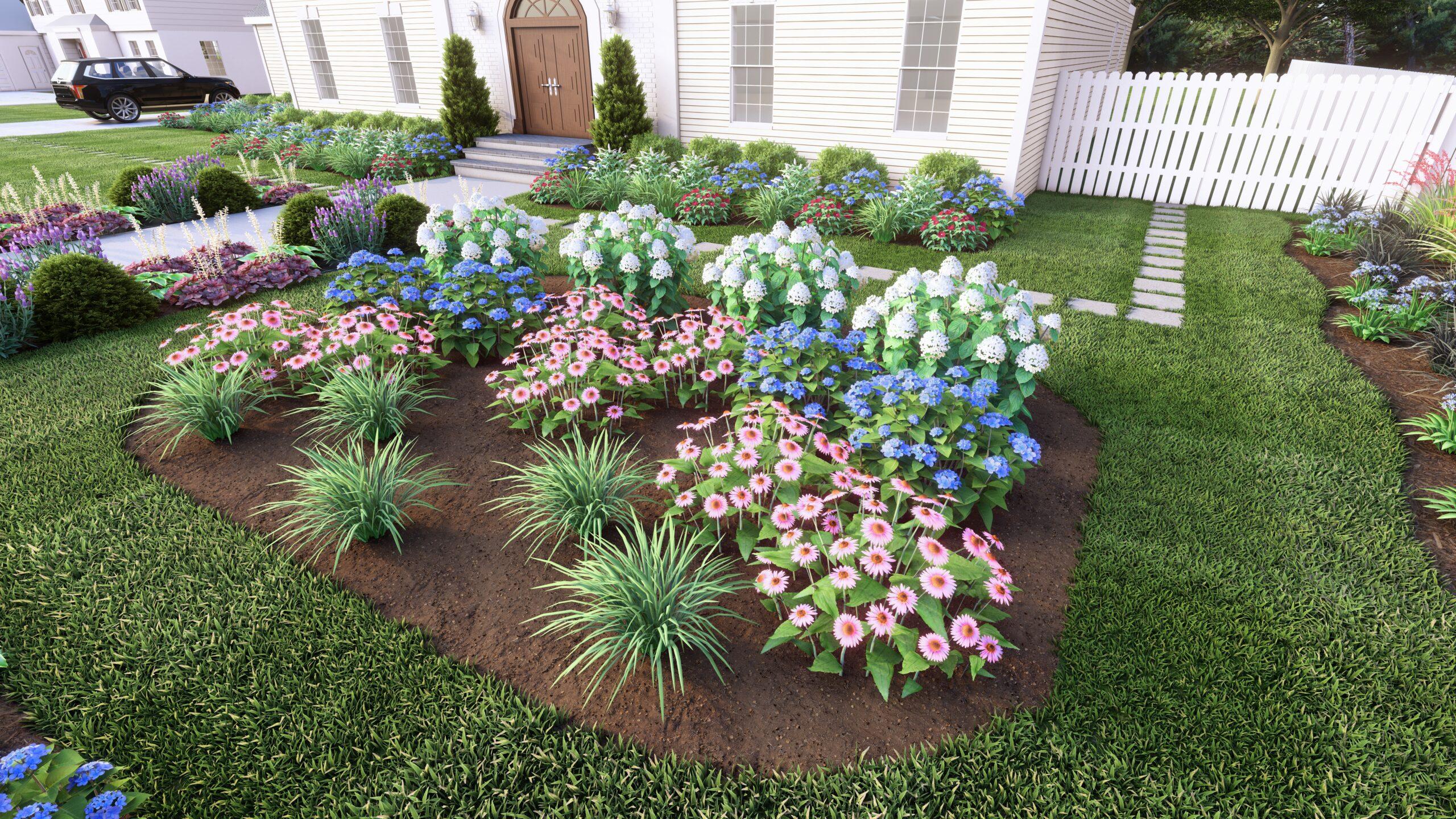
Symmetrical landscaping is a hallmark of timeless design, creating a sense of balance and harmony that draws the eye and soothes the soul. Incorporating symmetry into your garden can turn an ordinary outdoor space into a stunning visual masterpiece. Consider using mirrored plantings, where identical shrubs or flowers frame a pathway, leading the visitor’s gaze toward a focal point like a stunning fountain or a decorative statue. Even simple patterns, such as a pair of similar pots on either side of a front door or two equal-sized garden beds, can evoke a classic elegance that feels both welcoming and refined.
To enhance the symmetrical appeal, you might introduce elements like straight pathways, circular flower beds, or repeating floral designs. A well-planned balance in hardscape and softscape, such as benches flanking a central feature or an archway leading to a perfectly aligned row of trees, can multipy the impact of your landscaping. Additionally, consider using color schemes to reinforce symmetry; planting the same colors in both halves of a garden will enhance the pleasing effect of your symmetrical design. Utilizing tools to visualize your landscaping layout can further clarify how symmetry will transform your space. Explore design inspiration at House Beautiful for more ideas.
Create a tranquil zen garden with minimalist landscaping design elements
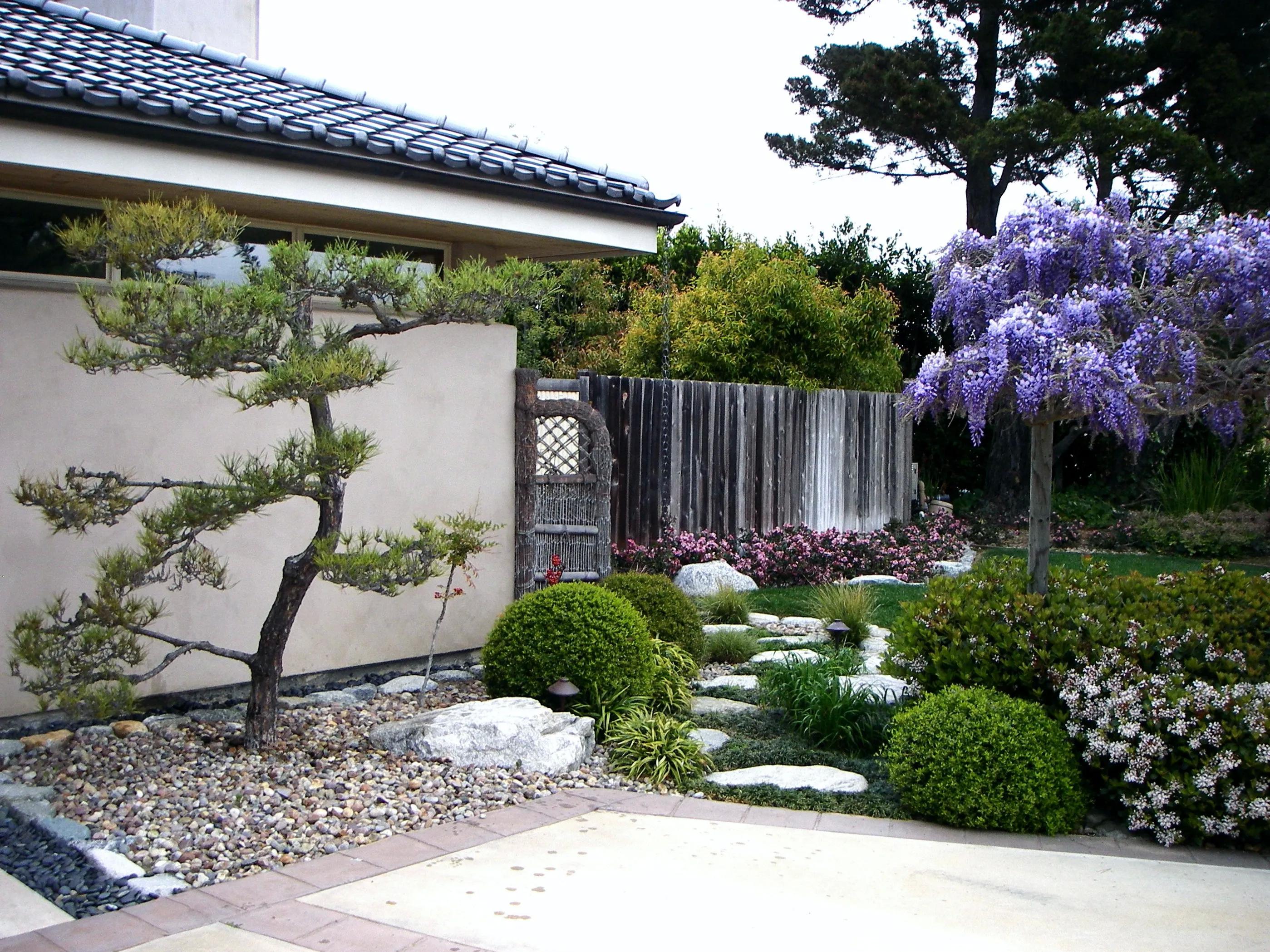
Transform your outdoor space into a peaceful retreat by incorporating minimalist landscaping design elements, perfect for a zen garden. Start with smooth, raked gravel or pebbles to create a soothing base that embodies simplicity. Arrange large, flat stones in a natural pathway to guide the eye and invite visitors to wander thoughtfully. Consider integrating a bamboo fence or a simple wood trellis to define the boundaries of your sanctuary while allowing for the gentle rustle of wind through the natural materials. Ornamental grasses and a few carefully placed succulents or bonsai trees can add character without overwhelming the senses.
To enhance the tranquil environment, include mindful elements such as a water feature—a small pond or a bubbling fountain can provide a calming audio backdrop. Use a rustic wooden bench or a stone seating area for moments of reflection and peace. Incorporate subtle lighting, such as solar-powered lanterns or soft glow lights, to create an inviting ambiance during dusk. Minimalism is key; each element should serve a purpose, ensuring your zen garden remains a serene escape. For more ideas on crafting beautiful spaces, visit gardenista.com.
Use native plants to enhance sustainability in your landscaping design
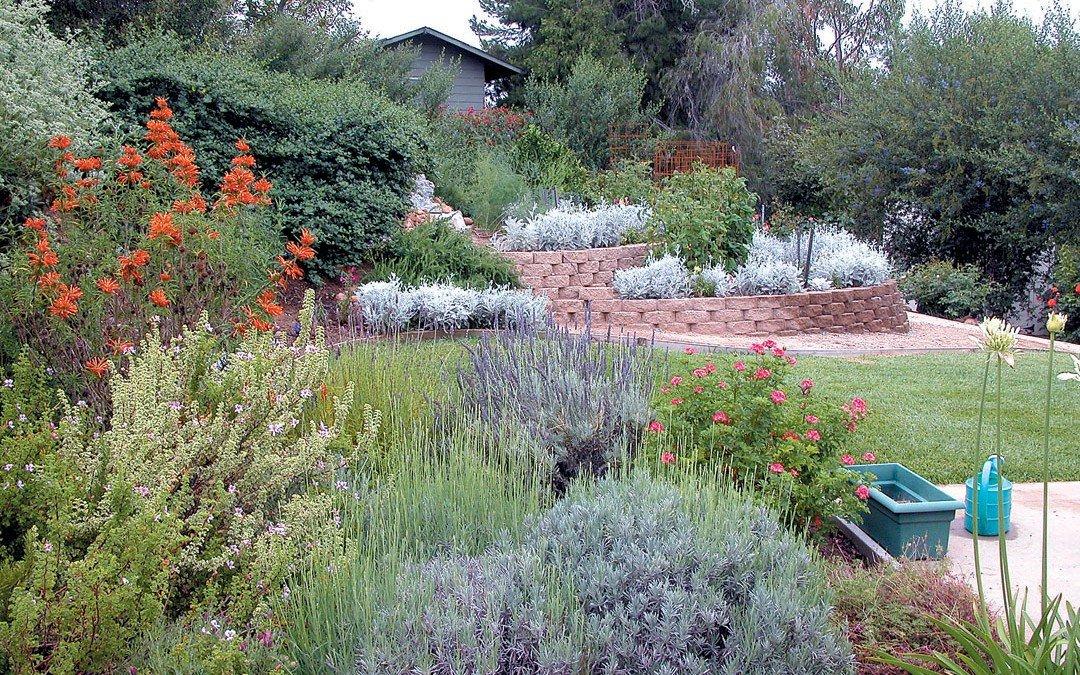
Incorporating native plants into your landscaping design is a fantastic way to promote biodiversity and enhance the environmental sustainability of your garden. These plants are well-adapted to local conditions, requiring less water, fertilizer, and maintenance compared to non-native species. By selecting plants that naturally thrive in your region, you encourage local wildlife, including pollinators like bees and butterflies, to flourish. To get you started, consider plants such as:
- Wildflowers: A burst of color that attracts beneficial insects.
- Grasses: Such as blue grama or little bluestem, which provide habitat and reduce soil erosion.
- Shrubs: Like elderberry or serviceberry, which support birds and other wildlife.
Additionally, utilizing native plants can lead to reduced landscaping costs over time. They are often resistant to local pests and diseases, diminishing the need for chemical treatments and enhancing sustainability in your garden. To help you recognize the best native plants for your area, consider visiting local conservation groups or databases. Here’s a brief table highlighting some native plant suggestions based on different regions:
| Region | Native Plants |
|---|---|
| Midwest | Purple Coneflower, Butterfly Milkweed |
| Southeast | Azalea, Southern Magnolia |
| West Coast | California Poppy, Red-twig Dogwood |
| Northeast | Black-eyed Susan, New England Aster |
By choosing native plants, not only do you create a thriving ecosystem, but you also cultivate a garden that resonates with the natural beauty and ecology of your region. Discover more about the benefits of native plants on eco-friendly sites like Audubon.
Incorporate vertical gardens for a stunning visual impact in your landscaping design
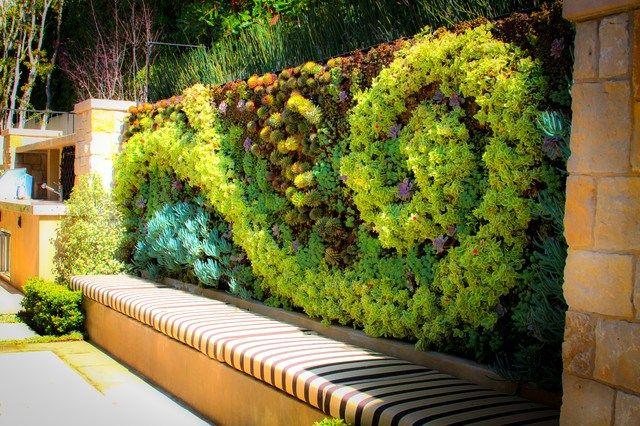
Vertical gardens can transform an ordinary landscape into an extraordinary visual spectacle. By utilizing walls, fences, and trellises, you can introduce layers of greenery that draw the eye upward, creating a captivating focal point. Vines, flowering plants, and even herbs can be incorporated into your vertical spaces, providing beauty and function to your garden. Additionally, these gardens can be space-saving solutions for urban areas, allowing you to maximize your green footprint without taking up precious ground space. Mixing different textures and colors can result in a dynamic visual experience that changes through the seasons.
To achieve the best results, consider the following elements when planning your vertical garden: Lighting, which can dramatically affect plant growth and aesthetics; Irrigation systems, to ensure your plants receive adequate moisture; and Structural support, which is vital for heavier plants. You might also explore creative containers like wall-mounted planters or repurposed materials that add an interesting narrative to your landscaping. For inspiration, visit sites that specialize in green design, such as gardenista.com, where you can find innovative examples to spark your creativity.
Design a cozy fire pit area as a focal point in your landscaping design
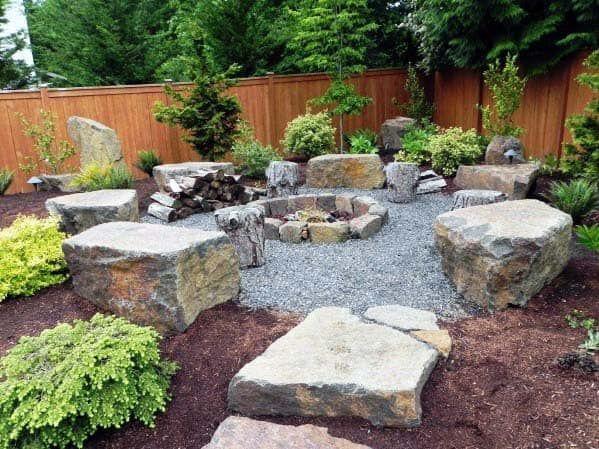
Creating a fire pit area is an excellent way to transform a corner of your garden into an inviting gathering space. Choose a central location, preferably with a view of the sunsets or surrounded by lush greenery. Select materials that blend well with your home’s exterior and the natural surroundings. Stone or brick fire pits can add a rustic charm, while sleek metal designs might appeal to modern aesthetics. To maximize comfort, incorporate sturdy seating options such as built-in benches, Adirondack chairs, or even large colorful cushions scattered around the pit. Add string lights or lanterns to enhance the ambiance during evenings, making it perfect for stargazing or intimate gatherings with family and friends.
To make the area truly functional, consider incorporating a small table or side tables for placing drinks and snacks. A pergola or canopy can add shelter and redefine the space during the day, creating a cozy nook even when the sun is shining. Don’t forget to integrate landscaping elements such as flowers or shrubs around the fire pit to soften the edges and blend the area harmoniously into your garden. Check out Houzz for more creative ideas and inspiration on fire pit designs, making your outdoor experience unforgettable.
Blend hardscaping and softscaping for balanced landscaping design
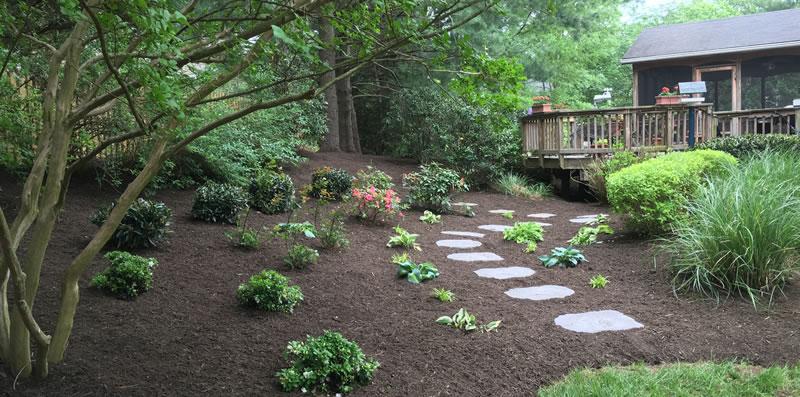
Incorporating hardscaping elements, such as stone pathways, patios, and retaining walls, alongside softscaping features like flowers, shrubs, and trees can create a harmonious balance in your garden. Consider choosing materials that complement the natural vegetation in your landscape. For example, use natural stone for walkways that blend seamlessly with your surroundings, or opt for composite decking that offers a modern touch while remaining durable. Creating visually appealing transitions between these elements can enhance the overall aesthetics of your design. Combine these features thoughtfully, ensuring that hardscaping acts as a frame for your softscapes rather than overpowering them.
Experimenting with different layers and textures can elevate the beauty of your outdoor space. Vertical gardening on hard surfaces, like trellises or walls, allows you to introduce greenery without compromising on space. Additionally, seasonal planting can ensure that your landscape remains vibrant throughout the year. To further enhance your design, consider including a water feature, which serves as a focal point that attracts both the eye and local wildlife. The interplay between the hard and soft elements will not only provide visual interest but will also create a more functional garden space that can be enjoyed across different seasons. Explore more ideas at Houzz.
Create meandering paths for exploration in your landscaping design
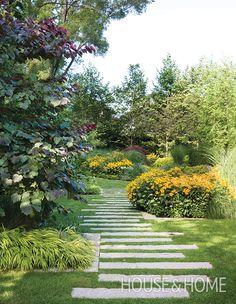
In any garden landscape, meandering paths serve as invitations to explore, encouraging visitors to wander and take in the natural beauty surrounding them. Consider incorporating curvy stone paths, edged with vibrant perennial flowers that sway gently with the breeze. This design not only softens the lines of the garden but also creates a sense of journey, leading the eye—and the foot—toward unexpected focal points like a secluded bench or a fountain. Additionally, choosing materials such as decomposed granite or rustic bluestone can enhance the organic feel, seamlessly integrating the paths into the landscape.
To elevate the exploratory experience, layer your paths with varying heights and textures. For example, you might wish to include bridge-like walkways over small streams or dips in the terrain, adding an element of surprise and excitement. Integrating native plantings along the edges will not only provide a natural feel but also offer habitats for local wildlife, enriching your garden’s ecosystem. Adding visual markers such as whimsical sculptures or strategically placed lanterns can guide visitors along their journey, making every turn and corner a delightful discovery. For more inspiration on pathways that lead to adventure, visit gardenista.com.
Add water features to bring serenity into your landscaping design
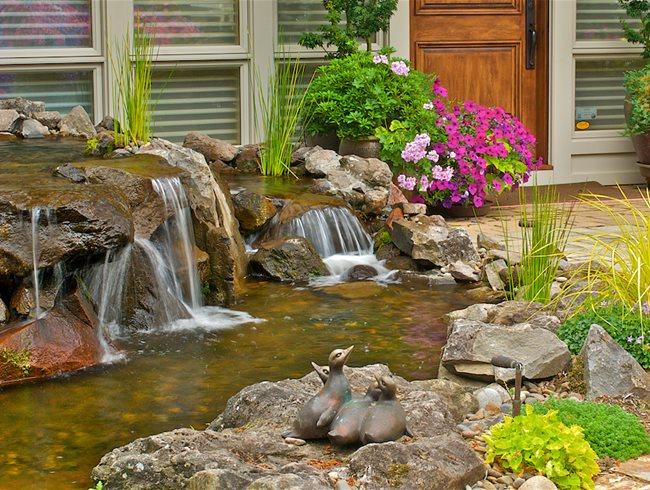
Adding water features to your landscape can transform any garden into a tranquil oasis. Consider options such as fountains, ponds, or waterfalls that complement your surroundings and create a soothing ambiance. Fountains can range from grand, multi-tiered masterpieces to simple, modern designs that gurgle softly. Ponds, adorned with plants and lily pads, invite both wildlife and reflection, while waterfalls cascading over rocks produce the gentle sound of flowing water that can drown out the hustle of everyday life. Each of these elements can be designed to harmonize with your existing plants and hardscape, creating a seamless flow between nature and your living space.
To elevate the soothing effect of these features, think about integrating lighting and surrounding landscapes that enhance the overall experience. Soft LED lights can illuminate water features at night, turning them into striking focal points. Surrounding your water feature with fragrant plants like lavender or jasmine adds to the sensory experience, while seating areas nearby can provide a perfect retreat for relaxation. Additionally, consider using natural materials such as stone or wood to construct the feature, ensuring it feels naturally integrated into the environment. For more inspiration on designing serene spaces with water, check out Better Homes & Gardens.
Utilize raised beds for efficient gardening in your landscaping design
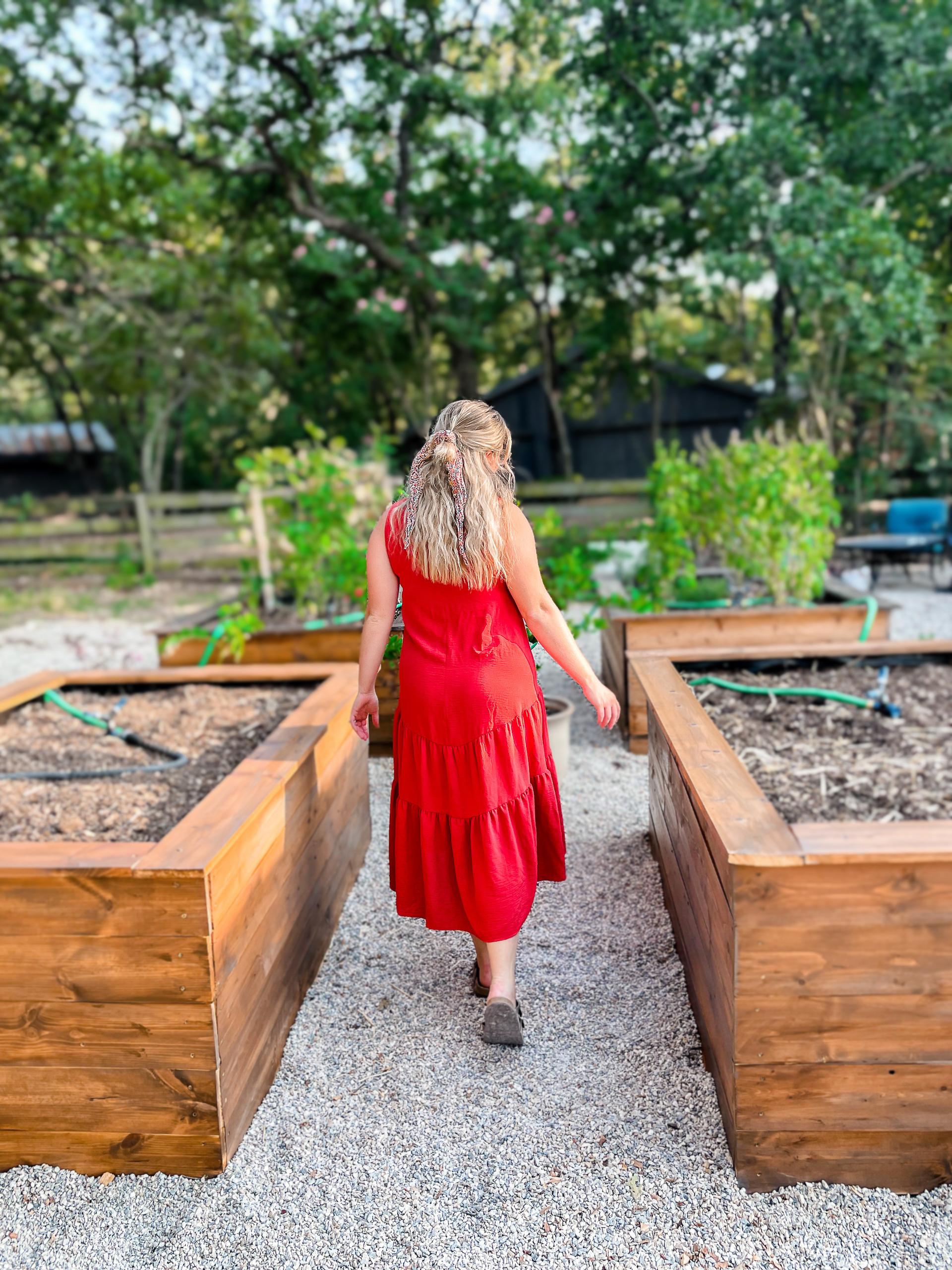
Creating raised beds can revolutionize your gardening experience while enhancing the visual appeal of your landscape. By elevating your planting area, you not only make gardening more accessible but also improve soil drainage and control over soil quality. Consider the following benefits:
- Defined spaces: Raised beds help delineate garden areas, adding structure to your landscape design.
- Improved yield: Plants in raised beds often yield higher due to better drainage and soil quality.
- Creative styles: Customize your raised beds with various materials—wood, stone, or metal—to match your garden theme.
- Vertical options: Combine vertical gardening techniques with raised beds to maximize your growing space.
To maximize your landscape’s potential, incorporate pathways between raised beds for easy access, ensuring your gardening tasks remain efficient. Consider variations in height: Creating tiers of raised beds not only adds dimension but also promotes different microclimates suitable for a variety of plants. Use a layout like the following to inspire your design:
| Height Level | Best Plants | Design Tips |
|---|---|---|
| Low (12-18 inches) | Herbs, lettuce | Place near the kitchen for easy access. |
| Medium (24-30 inches) | Carrots, radishes | Use vibrant colors and patterns to attract attention. |
| High (36-48 inches) | Tall flowers, beans | Add seating around for a cozy gathering spot. |
For more insights on maximizing your gardening capabilities with raised beds, explore Gardening Know How.
Define spaces with hedges to enhance landscaping design privacy
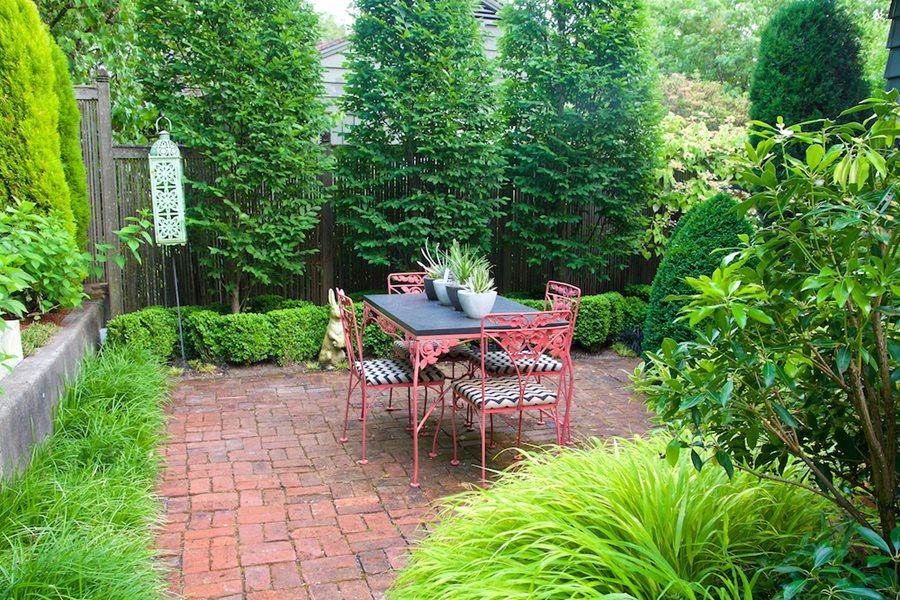
Adding hedges to your landscaping design is a brilliant way to create defined spaces that not only enhance privacy but also add structure and elegance. Consider using a variety of evergreen and deciduous shrubs to create layered hedges. These can serve as natural barriers between different areas of your garden, such as separating seating areas from vegetable patches or flower beds. Select plants like Boxwood or Holly for a classic feel, or go for Laurel for its dense foliage and fragrant flowers. The choice of hedges can also influence the visual flow of your garden, allowing visitors to meander through distinct yet connected spaces.
To elevate the aesthetic appeal, think about incorporating various heights and textures within your hedges. Mix taller plants like Leylandii with shorter varieties such as Lavender or Rosemary to create a lush, multi-dimensional barrier. This combination not only enhances privacy but also attracts wildlife, enriching your garden’s ecosystem. Additionally, consider the placement of garden features, such as seating or fountains, within these lush enclosures to cultivate cozy, serene spots. For more expert tips on using hedges effectively, explore resources available at Gardeners World.
Implement seasonal flowers for vibrant landscaping design throughout the year
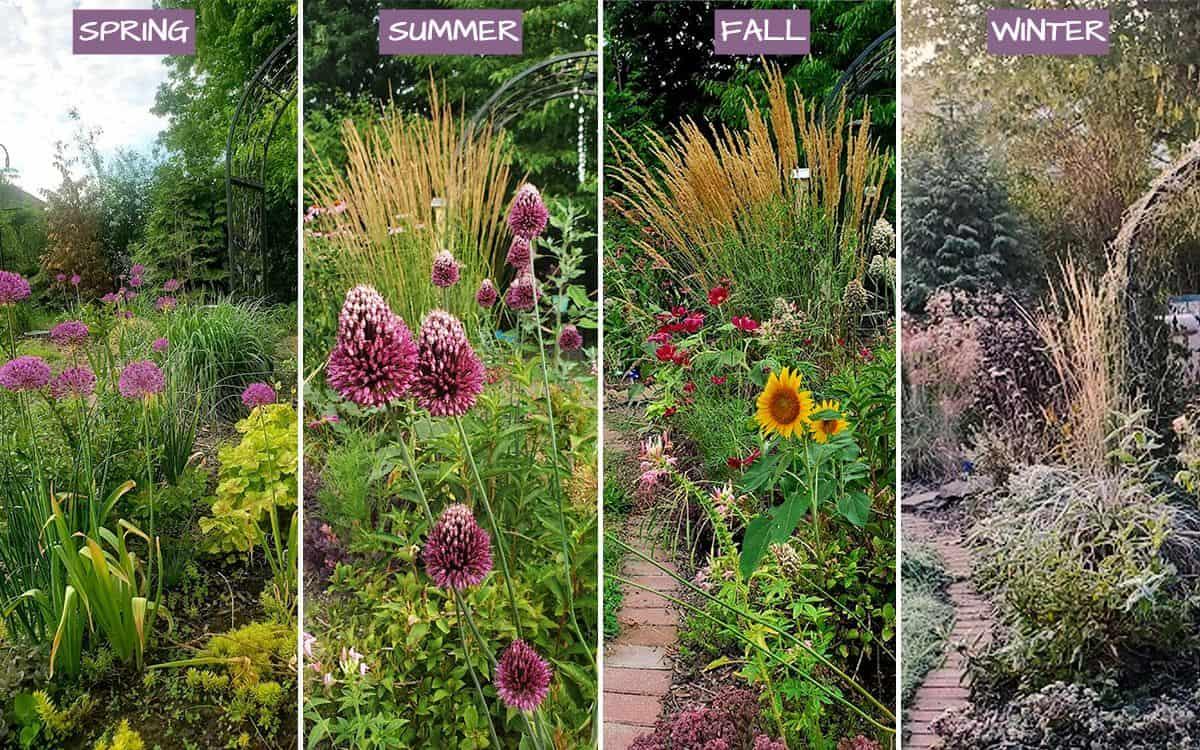
To create a breathtaking landscape that shifts with the seasons, incorporating a variety of seasonal flowers is essential. Think about spring blossoms like tulips and daffodils to kick off the color parade. As summer rolls in, you might want to include vibrant sunflowers and luscious petunias that thrive in warm weather, providing a backdrop of color and life in your garden. When autumn arrives, the warm hues of chrysanthemums and asters can offer a delightful contrast to the cooling weather, ensuring your landscape remains captivating throughout the season. Winter can be transformed, too, by planting snowdrops and hellebores, which bloom early and bring a touch of life to the otherwise stark landscape.
To make the most of your seasonal planting, consider creating a flower rotation schedule within your garden design. An effective way of organizing these flowers includes grouping them according to their bloom periods and color palettes. Here’s a simple layout to help you plan:
| Season | Flower Types | Planting Tips |
|---|---|---|
| Spring | Tulips, Daffodils, Hyacinths | Plant bulbs in fall for an early spring bloom. |
| Summer | Sunflowers, Petunias, Marigolds | Choose heat-resistant varieties; deadhead for continuous blooms. |
| Autumn | Chrysanthemums, Asters, Sedums | Layer perennials to create depth as winter approaches. |
| Winter | Snowdrops, Hellebores, Winter Jasmine | Ensure good drainage to prevent rot in dormant bulbs. |
Consider visiting sites like bhg.com for more seasonal inspiration in flower selection.
Experiment with colors to create excitement in your landscaping design
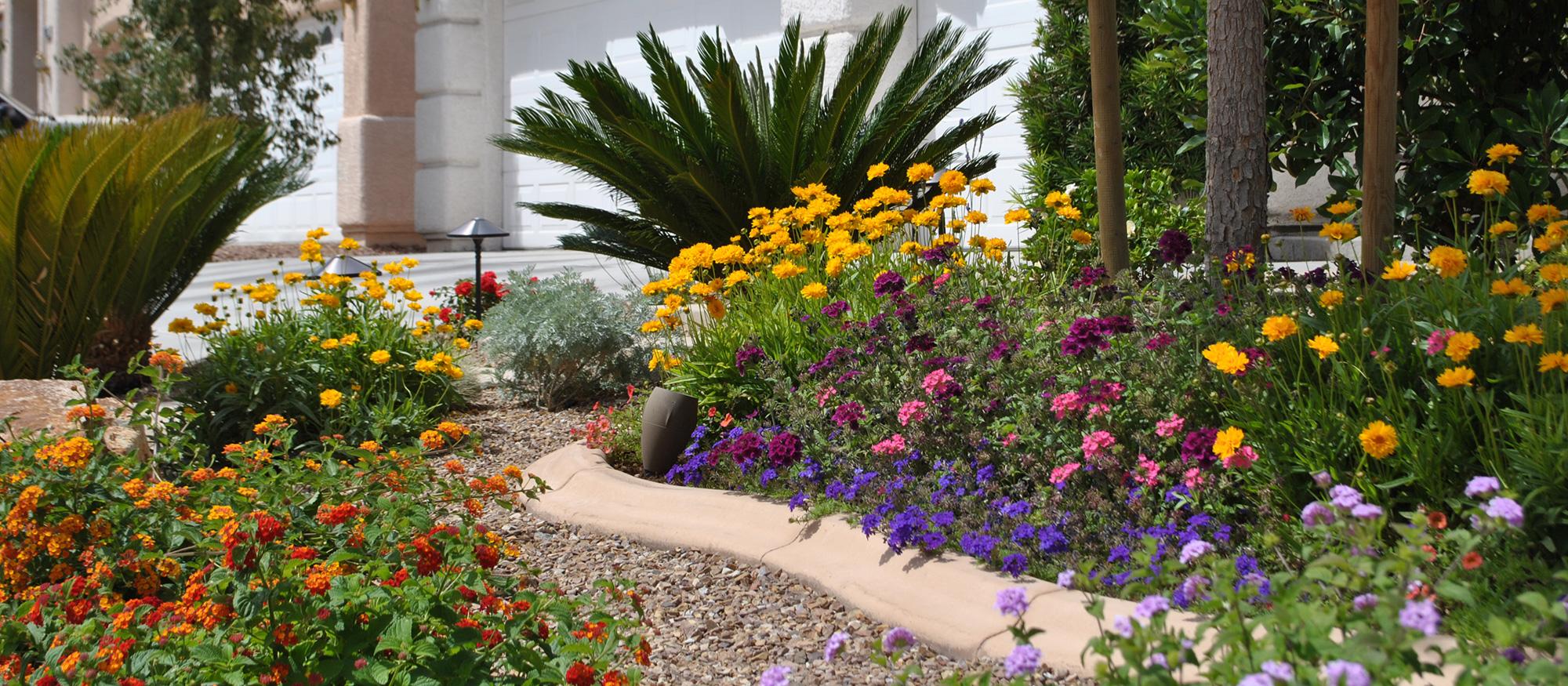
Incorporating a vibrant palette into your landscaping can transform a standard garden into a breathtaking color spectacle. Start by selecting a dominant color scheme that resonates with your personal style or complements the architecture of your home. For instance, use bold reds and yellows in flower choices to evoke feelings of warmth and energy, while cooler tones like blues and purples can create a calming atmosphere. Consider layering plants with different heights and textures, allowing your chosen colors to shine distinctly. When planning your layout, utilize color blocking—grouping plants of similar hues together—to create visually stunning moments throughout your garden space.
Don’t shy away from experimenting with unconventional colors in garden furniture and accessories as well. Opt for planters, trellises, and outdoor seating that harmonize or contrast with your greenery. Imagine bright turquoise pots against lush green bushes or eye-catching fuchsia furniture amidst a backdrop of neutral foliage. To add even more depth, introduce seasonal varieties that change with the seasons, ensuring a dynamic colorful experience year-round. For inspiration on color ideas, explore more at gardenia.net.
Incorporate whimsical garden art to personalize your landscaping design
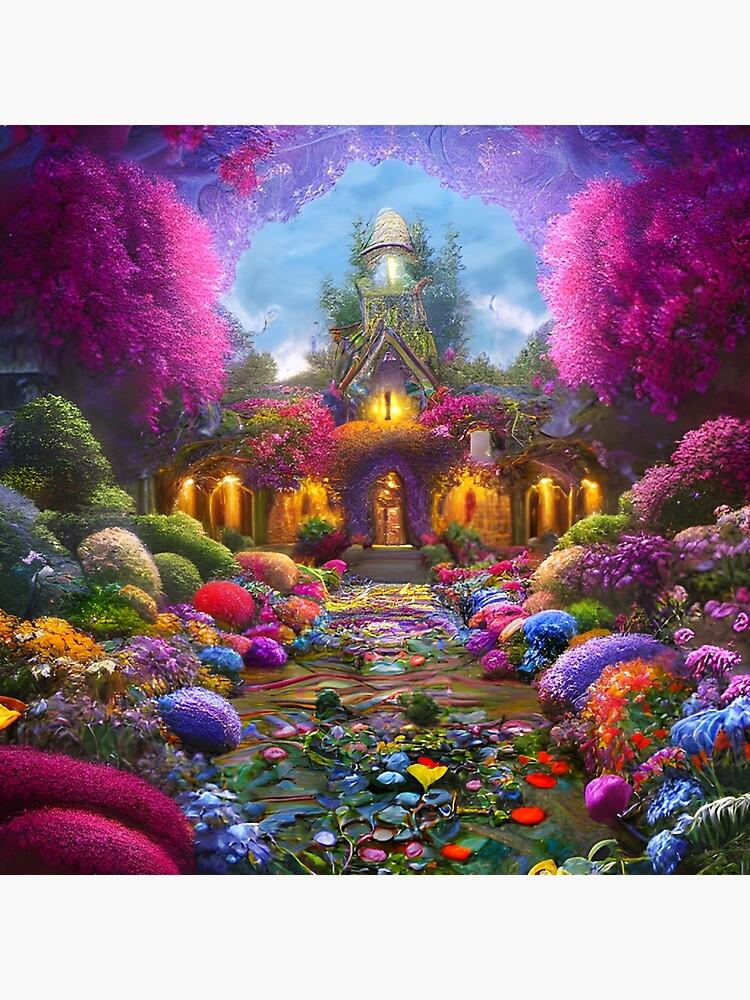
Let your garden reflect your personality by introducing quirky and imaginative garden art. Whether it’s a playful gnome peeking out from behind flowers or a towering metal flamingo, whimsical touches can transform an ordinary landscape into a delightful haven. Consider adding elements like hand-painted birdhouses, colorful mosaic stepping stones, or even vintage bicycle planters filled with seasonal blooms. Each piece not only contributes to the aesthetic but also serves as a conversation starter, inviting guests to admire and inquire about your unique design choices.
To further amplify the charm of your outdoor space, think about creating themed installations that elicit joy and wonder. For example, you could arrange a collection of upcycled pottery into a sun-splashed courtyard or hang whimsical wind chimes that dance to the rhythm of the breeze. Don’t shy away from DIY projects like painting rocks or crafting fairy gardens that encourage creativity and interaction. When selecting pieces, ensure they harmonize with your garden’s overall tone, seamlessly blending artistry with nature. Discover even more ideas and inspiration on sites like HGTV, where creativity knows no bounds!
Establish a lush herb garden for functionality in your landscaping design
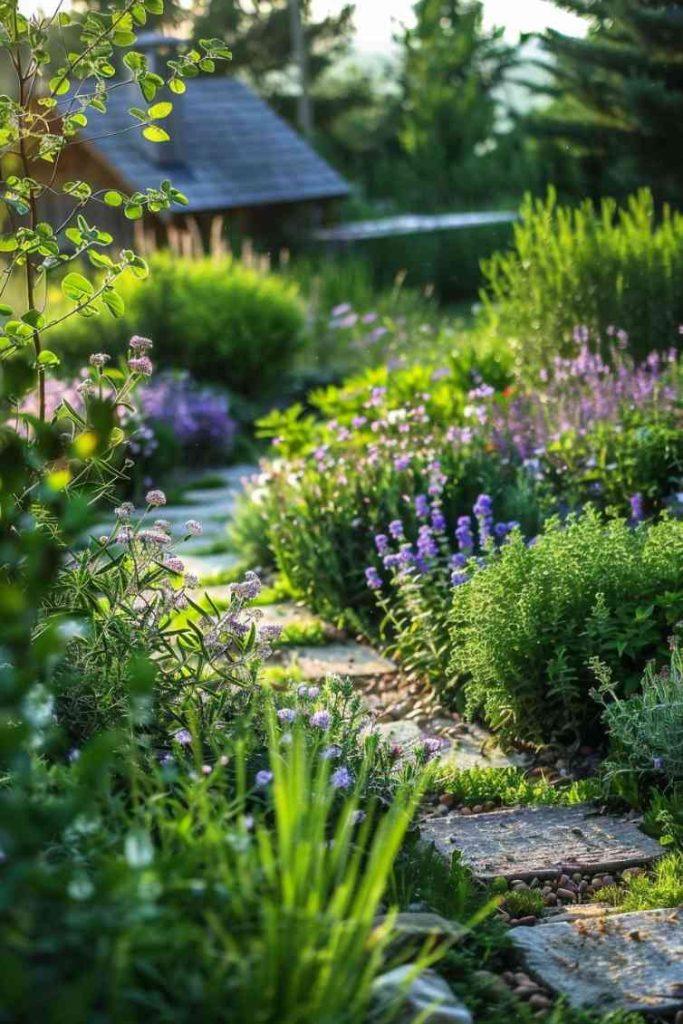
Imagine stepping into your yard and being greeted by the enticing aroma of fresh herbs wafting through the air. Establishing a vibrant herb garden not only adds a dynamic layer to your landscape design, but it also serves practical purposes. Incorporating a herb garden into your space can enhance the aesthetic appeal while providing fresh ingredients for your culinary adventures. Consider creating defined sections for different types of herbs, such as culinary, medicinal, and aromatic. Using rustic wooden pallets or stone borders can help distinguish these areas, creating a structured yet organic look that harmonizes with natural elements.
When planning your herb garden, think about including an assortment of functional designs. Vertical gardening can maximize space while adding visual interest. Strategically placing pots on tiered stands or wall-mounted planters can turn your garden into a stunning focal point. Companion planting is another strategy that can optimize growth and deter pests; for example, pairing basil with tomatoes not only helps improve the flavor of your tomato but can also enhance their growth. By choosing a variety of herbs like rosemary, thyme, and mint, you not only create a lush garden but also ensure a thriving ecosystem that attracts beneficial pollinators. For additional inspiration, check out bhg.com for ideas on herb garden layouts that blend seamlessly into your landscaping.
Use lighting creatively to elevate your landscaping design at night
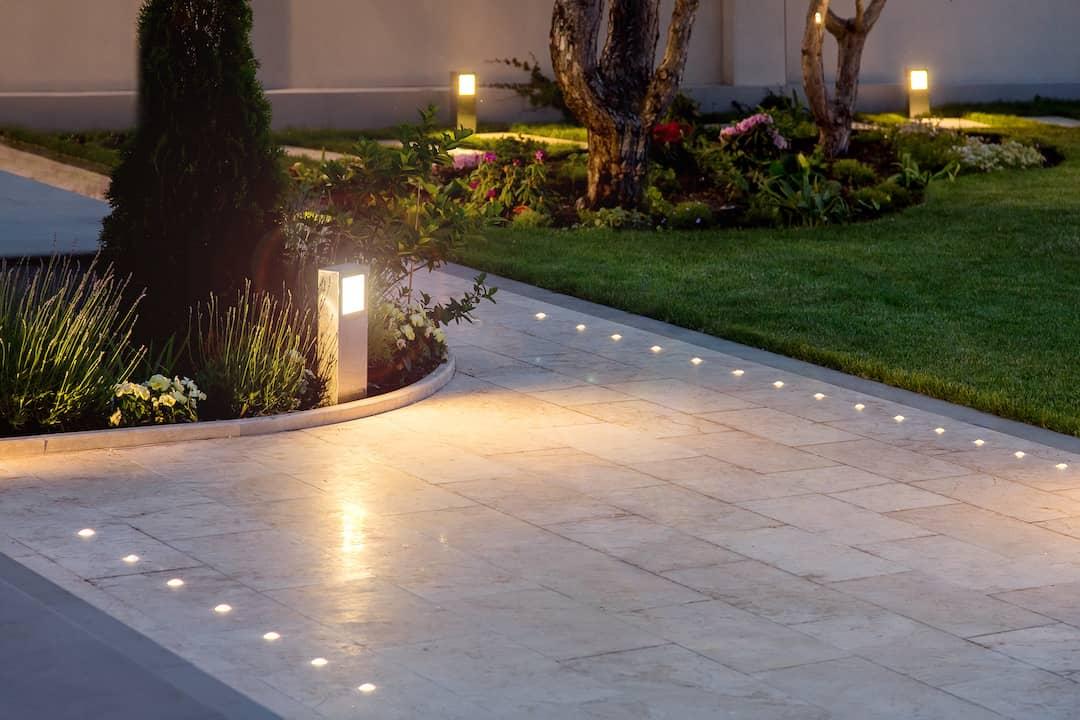
Transforming your garden into a nighttime wonderland involves more than just functional light; it’s about creating an enchanting atmosphere that highlights the beauty of your landscaping. Consider using up-lighting to focus on the unique features of your garden, such as trees, sculptures, or textured walls. This technique casts dramatic shadows and adds depth, making each element stand out in a captivating way. Incorporating string lights can create a cozy ambiance, ideal for outdoor dining spaces or pathways. Hang them above seating areas or drape them through trees to create a magical canopy of light. Don’t forget to experiment with color; LED lights that change hues can reflect the mood of your garden, allowing you to switch from a whimsical glow to a more sophisticated hue with ease.
Height plays a vital role in your garden’s evening transformation. Utilizing pendant lights or lanterns at varying heights can create visual interest and lead the eye through your outdoor space. When strategically placed amongst foliage, they can make pathways feel welcoming while illuminating the rich colors of the landscape. Consider a grid of spotlights directed towards different focal points in your garden; this setup can create intentional light ‘zones’, directing attention to the stunning details of your design. To explore more fascinating lighting ideas, check out Houzz, where you can find inspiration tailored to your specific garden aesthetics.
Create an inviting entryway with landscaping design that welcomes guests
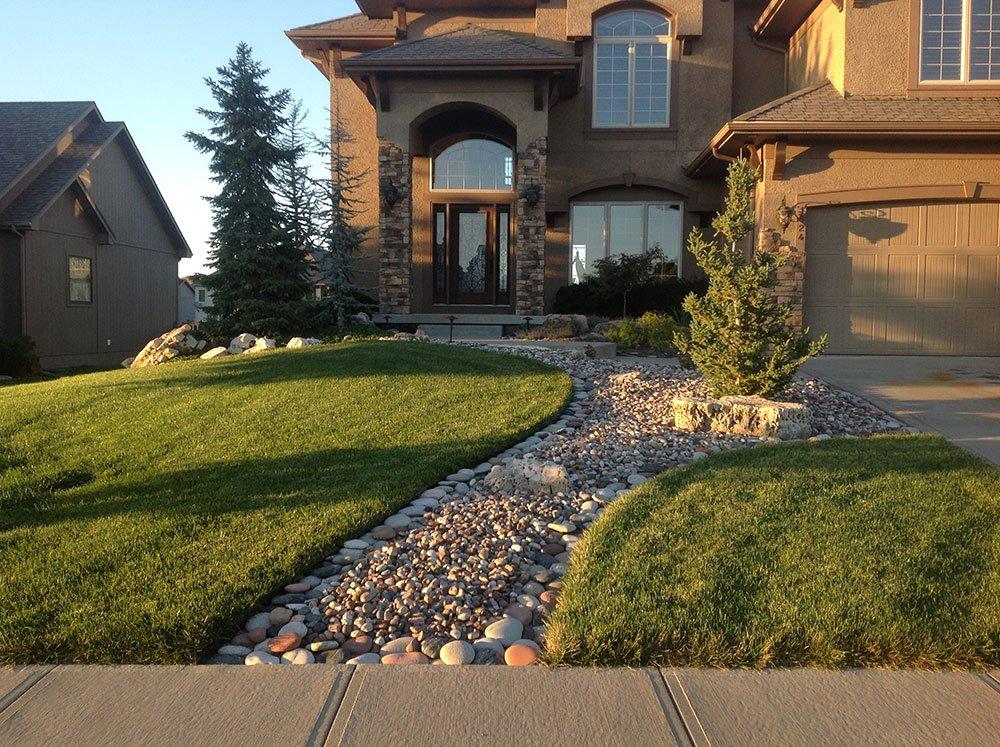
Transform your entryway into a warm and welcoming space with carefully curated landscaping design. Start by incorporating fragrant flowers and lush greenery that frame your front door, inviting guests to step into your home. Choosing a vibrant color palette can instantly uplift the mood; consider plants such as hydrangeas, lavender, or petunias for that perfect pop of color. Pathways leading to the entrance can be enhanced with stones or bricks, creating a seamless transition from nature to your doorway.
Adding decorative elements like a charming welcome sign, outdoor lighting, and seasonal decorations can further enhance the inviting atmosphere. Consider installing a small water feature or decorative stones to create a sense of tranquility. To make the most of your space, you can use vertical gardening techniques, such as wall-mounted planters, which not only save ground space but also add visual interest. For more tips on garden design, check out Joy Us Garden.
Integrate a butterfly garden to attract pollinators in your landscaping design
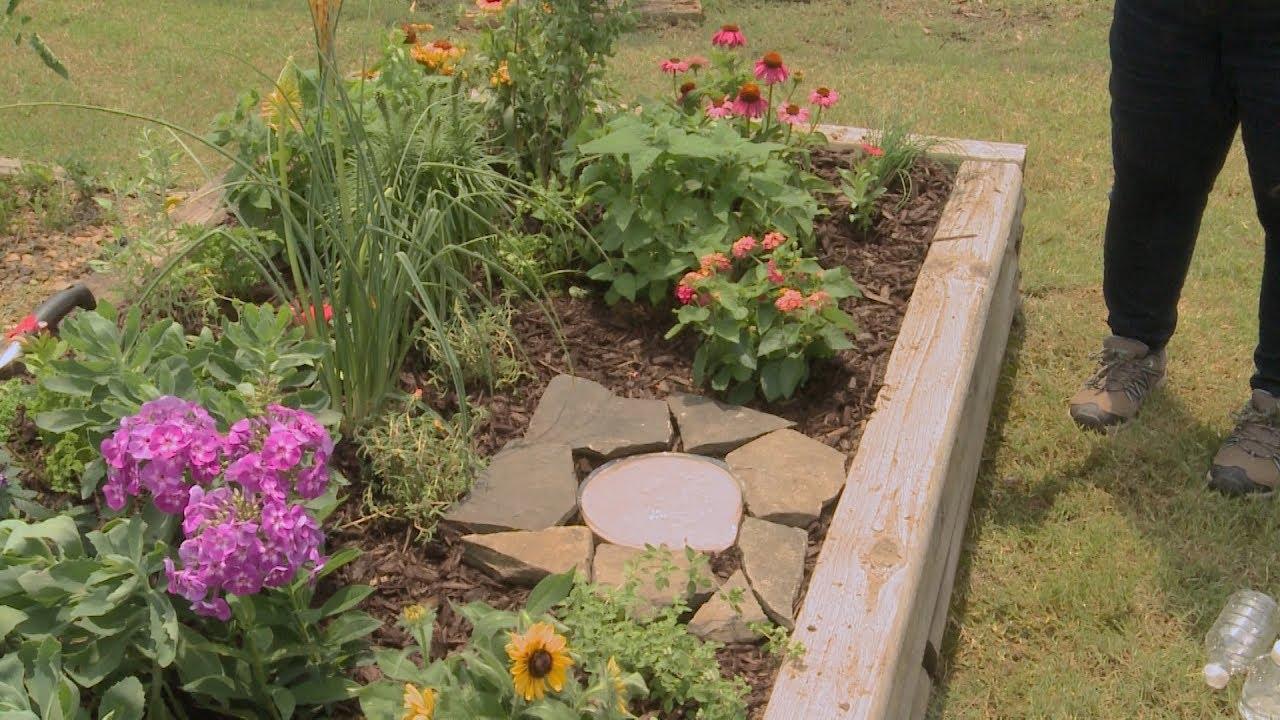
Transform your garden into a vibrant sanctuary by integrating a butterfly garden that not only enchants the eyes but also significantly boosts the local ecosystem. To attract these delightful pollinators, focus on planting a diverse array of nectar-rich flowers and host plants. Butterflies thrive on plants like lilac, milkweed, coneflower, and marigolds. Providing a variety of colors and sizes will create an inviting environment that encourages butterflies to visit frequently. Additionally, incorporating elements like flat stones for basking and shallow water sources can further entice these beautiful insects to make your garden their home.
Consider creating an enchanting layout that offers both beauty and functionality. Use native plants that are well-adapted to your climate, ensuring a more sustainable garden that supports local wildlife. Incorporating a colorful wildflower patch or a designated pollinator section can enhance visual interest while serving a practical purpose. To elevate your butterfly garden, think about integrating features such as windbreaks and flowering shrubs that not only protect these delicate creatures but also provide essential habitats. For more information on designing your butterfly-friendly landscape, visit NWF.org.
Design multi-level terraces for dynamic landscaping design on sloped properties
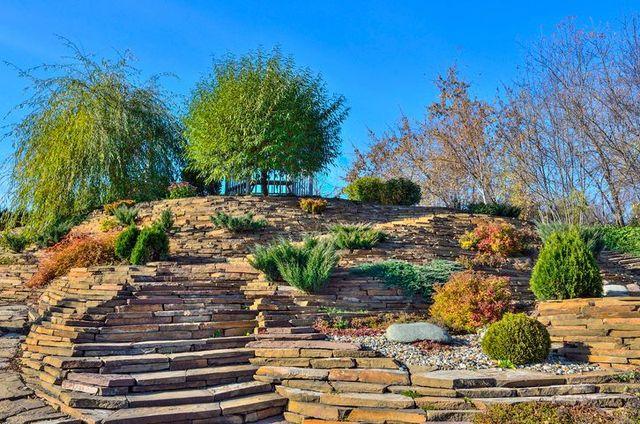
Transforming sloped properties into stunning landscapes can be an exciting challenge. By incorporating multi-level terraces, you can create a captivating, structured design that adds visual interest and maximizes usable space. These layers can serve a variety of purposes: from planting zones for flowers and shrubs to cozy seating areas for enjoying the view. Consider using natural stone, concrete, or wooden decking materials to construct your terraces, each providing a unique aesthetic appeal. With strategic planting, the terraces can also serve to manage water runoff, reducing erosion and promoting healthy plant growth.
Each terrace can be designed to highlight distinct foliage or create themed areas, such as a vegetable garden, a rock garden, or a shade garden under the trees. Include pathways, steps, and seating built into the design for easy access and relishing the beauty of the surrounding flora. To elevate the design further, integrate string lights or solar lanterns that cast a warm glow during evening gatherings. Explore various color palettes for plant selection that complement the terrace levels; vibrant blooms juxtaposed with lush greenery can turn a simple slope into a breathtaking spectacle. For more ideas, check out Landscape Illustration.
Formulate a rustic charm with natural stone in your landscaping design
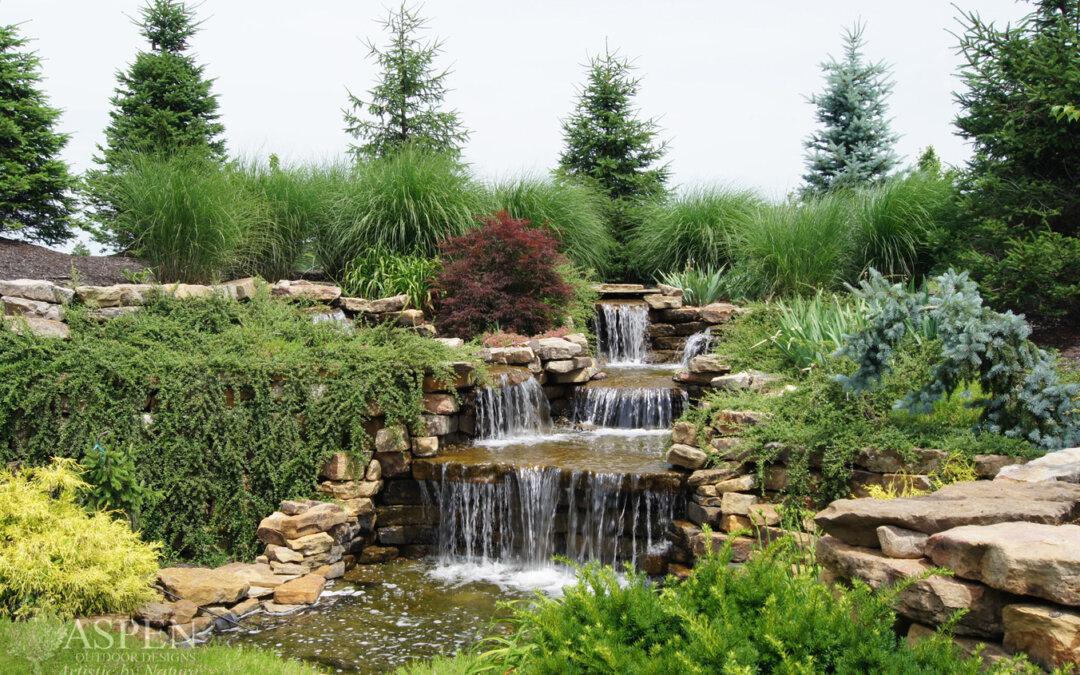
Embracing the beauty of natural stone can truly elevate your garden’s aesthetic, bringing a rustic charm that resonates with nature. Consider incorporating flagstone paths winding through your flower beds, which offers both functionality and visual appeal. Complement these pathways with retaining walls made of local stones that not only support your landscape designs but also provide a textured backdrop for vibrant greenery and blooming flowers. Another way to infuse stone into your garden is by creating stepping stones that lead to cozy seating areas or tranquil water features, offering a touch of whimsy and inviting relaxation. The integration of stone can also mimic the feel of a country cottage, especially when surrounded by wildflowers and ornamental grasses.
To enhance the rustic feel, opt for dry-stacked stone structures, where stones are layered without mortar, allowing for a more organic look. Incorporate natural rock boulders as focal points within your landscape, creating dramatic visuals that celebrate the earth’s textures. If you’re looking to add vertical interest, consider stone planters that are both functional and stylish. The contrast of rugged stone with soft, flowing plants can create a stunning visual dynamic. Discover more about how to incorporate natural stone into your designs by visiting aaaStone.com for expert insights and additional inspiration.
Implement eco-friendly landscaping design practices for a greener future
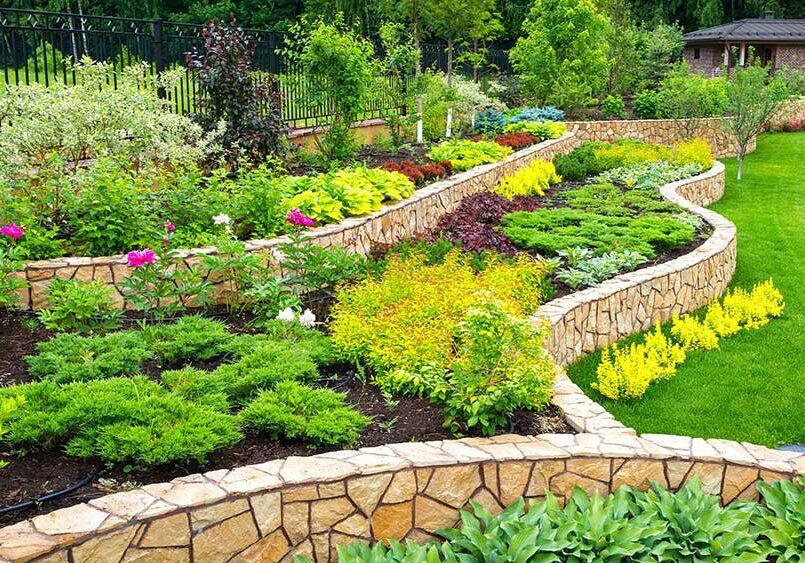
Embracing sustainability is paramount in modern landscaping. One outstanding way to achieve this is through native plant landscaping. By selecting plants that are indigenous to your region, you reduce the need for excessive watering, fertilizers, and pesticides, thereby conserving local resources and supporting the local ecosystem. Rain gardens are another innovative practice, designed to capture and absorb stormwater runoff. These gardens can help combat erosion, filter pollutants, and recharge groundwater. Moreover, integrating permeable paving within your designs allows water to filter through surfaces, reducing runoff and promoting healthier soil.
Implementing edible landscapes is a trend that marries aesthetics with functionality. Grow fruit-bearing trees, herbs, and vegetables alongside ornamental plants to enhance both the beauty and utility of your garden. Additionally, consider installing compost bins, which recycle organic waste into nutrient-rich soil, thereby nurturing your plants while reducing landfill waste. You might also explore xeriscaping, a landscaping practice that prioritizes drought-resistant plants and efficient irrigation techniques. For more eco-friendly ideas, tap into resources at The Gardener’s Path to inspire your next project!
Create a colorful border with flowering plants in your landscaping design
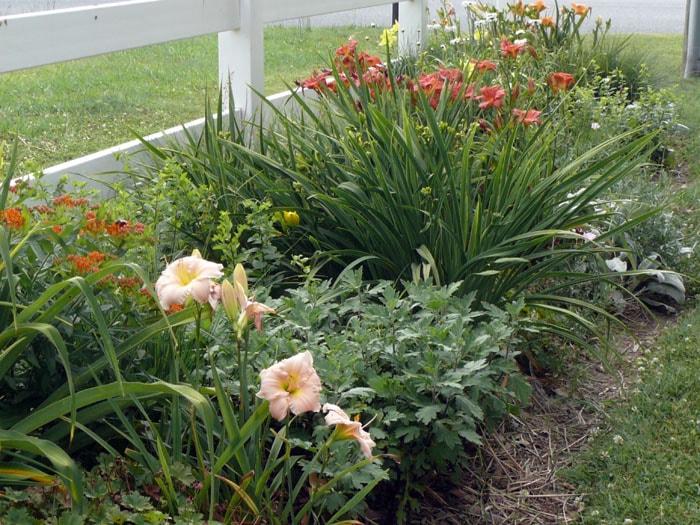
For a truly captivating landscape, consider crafting a vibrant border using an array of flowering plants that not only frame your garden but also serve as a stunning visual accent. A well-planned border can infuse dynamic colors and fragrance into your outdoor space, while attracting pollinators like bees and butterflies. Some great options for colorful borders include:
- Marigolds: Their bright orange and yellow hues can add warmth to any garden.
- Petunias: Available in countless colors, they bloom all season long and create a lush, full appearance.
- Lavender: Its beautiful purple flowers not only look lovely but also provide a wonderful scent and attract beneficial insects.
- Daylilies: These hardy perennials come in a variety of colors and are low maintenance, making them perfect for borders.
Using a mix of height, texture, and color can transform your landscape into a stunning tapestry. Pair taller plants like delphiniums or hollyhocks in the back with shorter varieties such as pansies or carnations in front for depth. To keep your border blooming through multiple seasons, consider planting a combination of perennials and annuals. You may also create visual interest by planting in clusters or drifts rather than straight lines. For inspiration on various flowering plants, check out flowerbulbs.com.
Incorporate edible landscaping design elements for beauty and taste
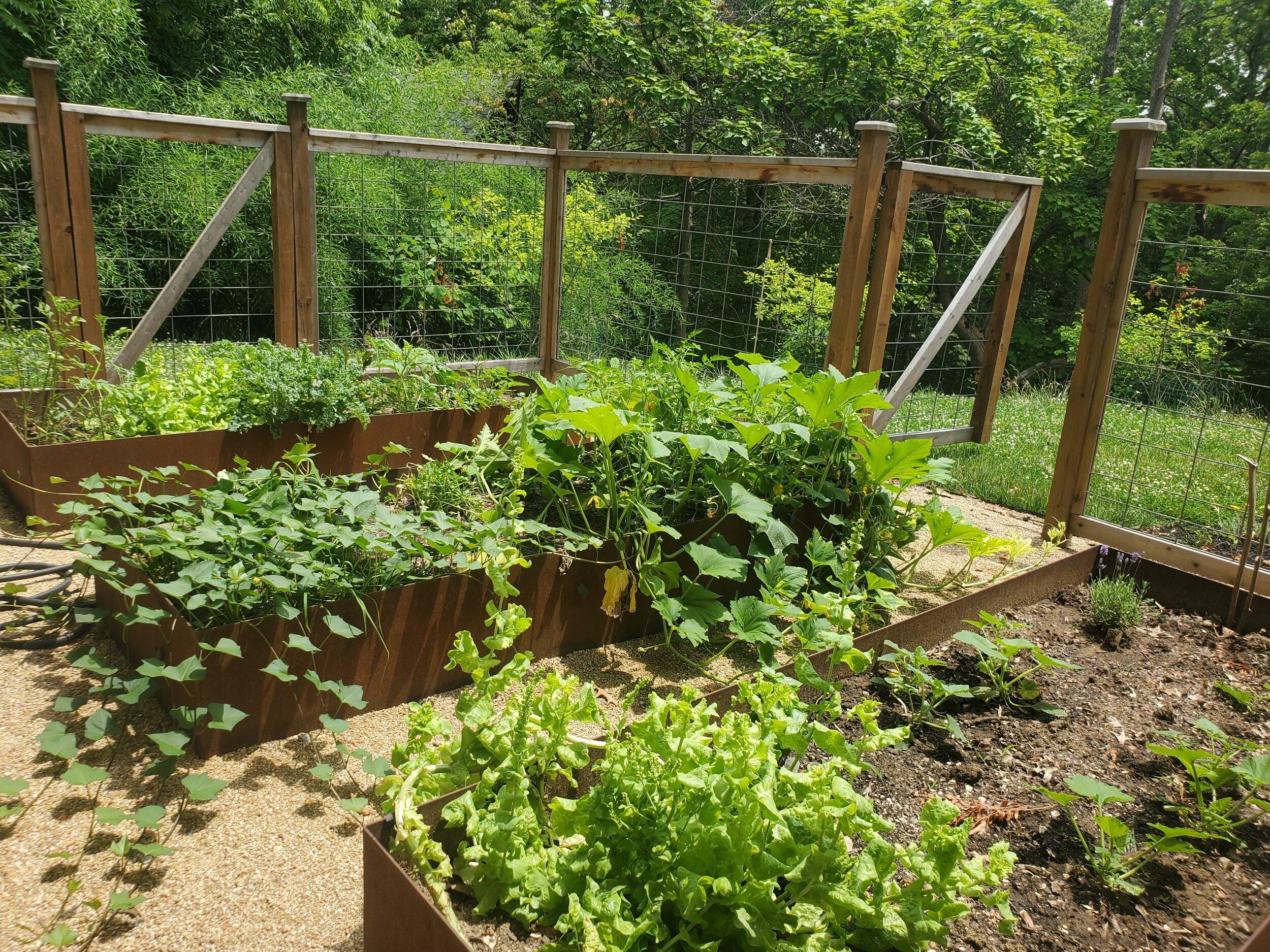
Transform your garden space into a feast for the eyes and palate by blending traditional landscaping with edible elements. Picture vibrant herb spirals, where rosemary and thyme intertwine with ornamental flowers, creating a neural pathway of scent and color. Incorporate raised beds framed by blooming perennials, offering both a striking visual contrast and easy access to fresh vegetables. Consider using fruit trees as part of your design, such as espaliered apples or pears against a fence, not only maximizing space but adding a unique architectural feature to your garden.
Another engaging option is to consider ground covers that are both beautiful and edible. Varieties like Creeping Thyme or Strawberry Plants produce vibrant blooms while providing delightful flavors. Design your garden pathways using edible plants like oregano or chamomile, giving a fragrant touch underfoot. To ensure a cohesive design approach, you can integrate a themed herb garden with labels crafted from reclaimed wood, guiding visitors through a sensory experience. For further inspiration on edible landscaping, visit ediblelandscaping.com.
Use pergolas to create shaded retreats in your landscaping design
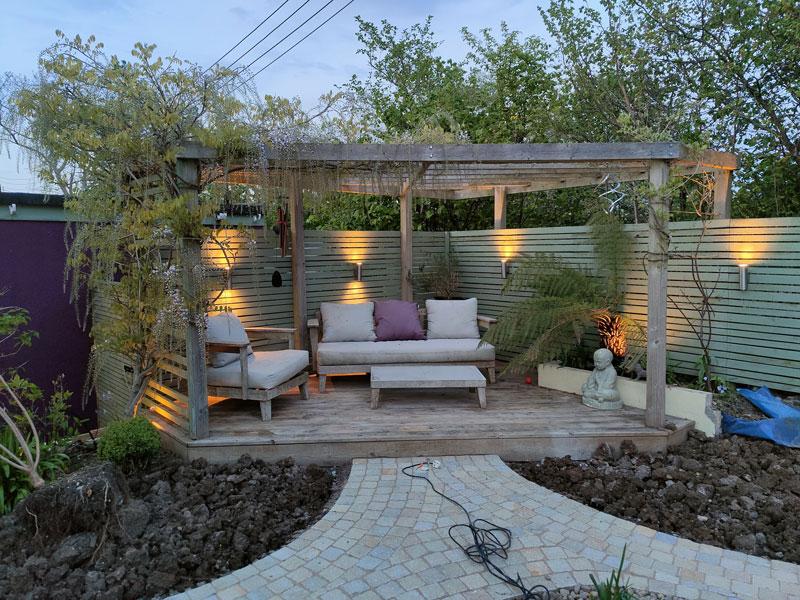
Incorporating pergolas into your garden design can transform an ordinary outdoor space into an enchanting shaded retreat. These elegant structures not only provide shelter from the sun but also add vertical interest and charm to your landscaping. They can be adorned with climbing plants, such as wisteria or clematis, creating a natural canopy that enhances the beauty of your garden. Consider the following ideas for using pergolas to maximize your outdoor experience:
- Cozy reading nook: Place a bench or lounge chair beneath the pergola, draped with soft cushions and throw blankets, to create an inviting space for relaxation.
- Outdoor dining area: Extend your kitchen outdoors with a shaded dining space, perfect for enjoying meals with family and friends.
- Garden pathways: Line your path with pergolas that encourage climbing vines, creating a fragrant and visually stunning route through your garden.
- Privacy screens: Use freestanding pergolas as elegant partitions that provide both shade and privacy in a bustling garden.
To ensure your pergola complements your landscape, consider the material, color, and design style. Wooden pergolas evoke a rustic feel, while metal or vinyl options offer a modern touch. Lighting is another crucial factor; incorporating string lights or lanterns can create a magical ambiance as night falls. A carefully planned pergola can serve as a focal point of your garden while practical elements enhance its functionality. For additional inspiration on outdoor designs, visit houzz.com.
Experiment with textures to add depth to your landscaping design
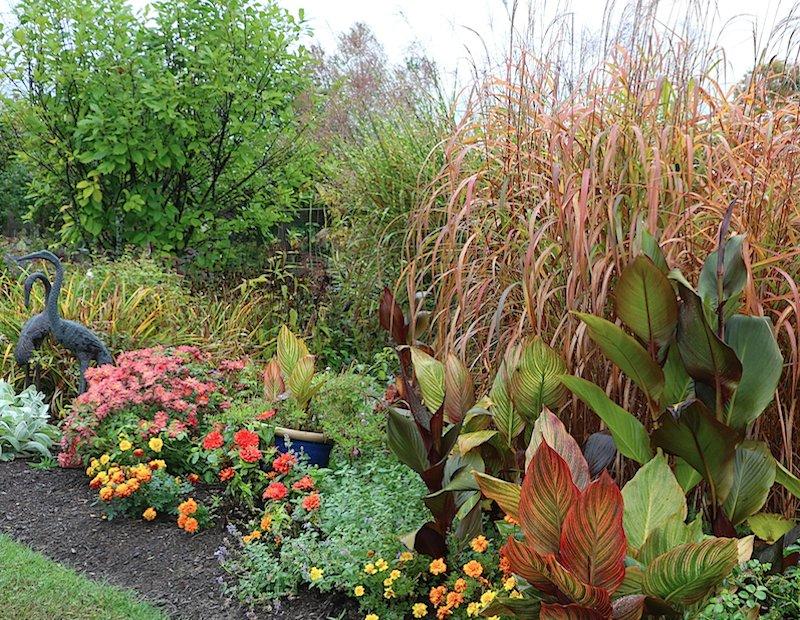
Integrating various textures into your landscaping can create a visually captivating and nuanced outdoor space. Consider incorporating smooth pebbles alongside rough bricks for pathways, juxtaposing the rigidity of stones with the organic feel of plants. Soft grasses can provide a gentle contrast to the sharp lines of wooden trellises, while bark mulch can serve as a textural bridge between softer flower beds and hardscaped areas like patios. These deliberate contrasts not only enhance the visual appeal but also play into the tactile experience of your garden, allowing visitors to engage their senses fully.
To fully grasp the art of texture blending, experiment with a mix of foliage types that showcase varying leaf shapes and colors. For instance, pair fuzzy-leaved succulents with glossy-leaved shrubs, creating a dynamic interplay that captivates the eye. Incorporate variegated plants for added intrigue, while elements such as water features can introduce shimmering reflections, further enriching the sensory palette. Consider creating dedicated zones in your garden designated to different textures, organized in a way that encourages exploration. For more ideas on mixing textures in your garden, check out gardeners.com.
Wrapping Up
As we close the chapter on our journey through these 24 inspiring landscaping design ideas, it’s clear that every garden has the potential to become a breathtaking sanctuary, irrespective of its size or style. From lush retreats to minimalist escapes, each idea invites you to explore the unique narrative your outdoor space can tell.
Whether you envision a riot of colors or a serene oasis, remember that landscaping is not merely about aesthetics—it’s about creating an environment that resonates with your spirit and complements your lifestyle. So, grab your gardening gloves, let your creativity flourish, and watch as your vision transforms from a seedling of an idea into a vibrant reality.
Thank you for joining us on this exploration of possibilities. May your garden be a canvas for your imagination, a reflection of your essence, and a source of joy for years to come. Happy gardening!
